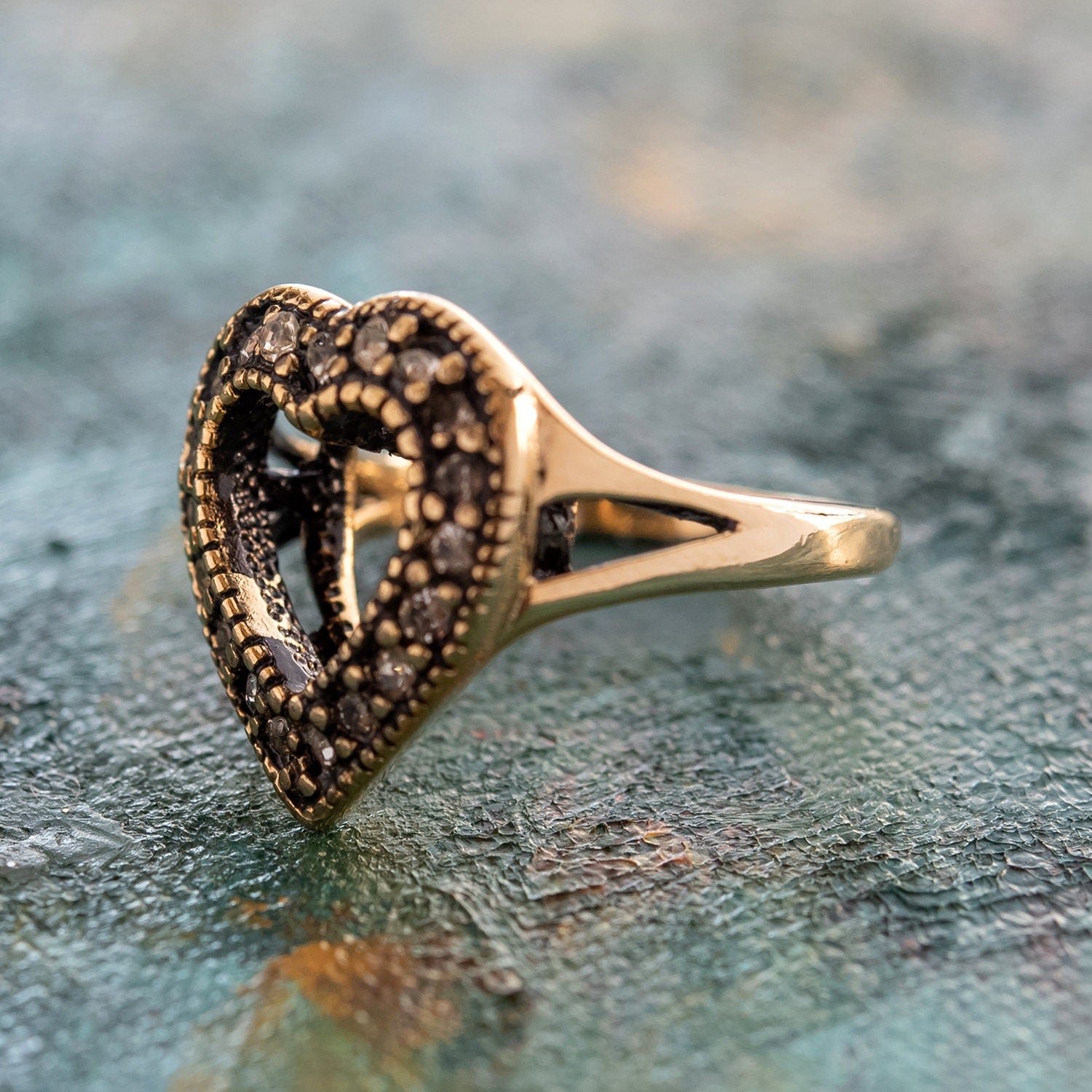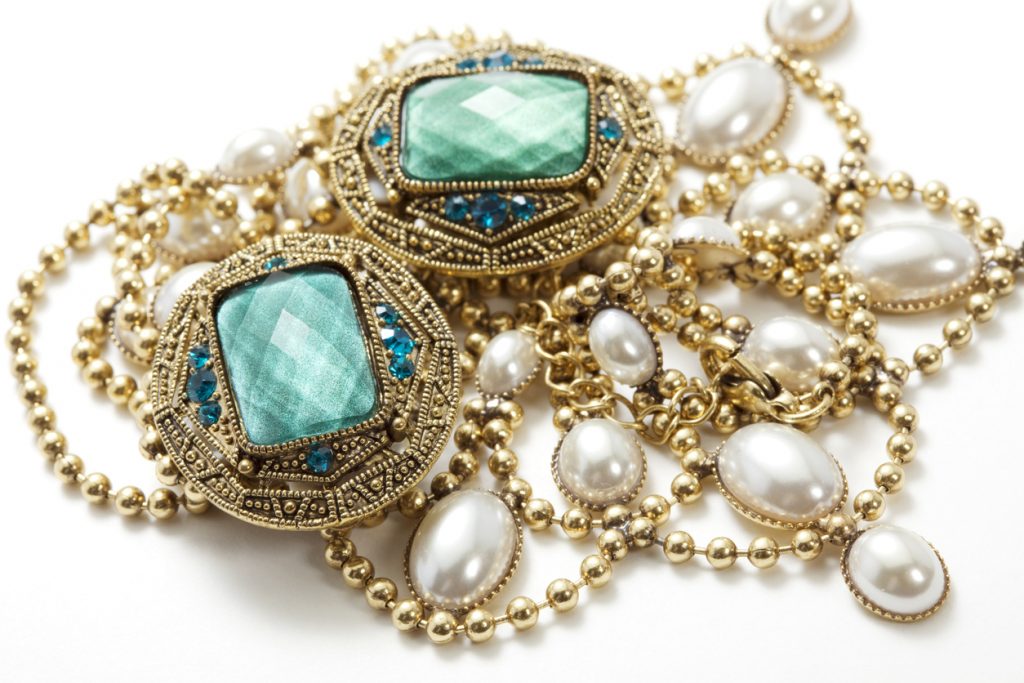Discover the Allure of Vintage Precious Jewelry and Its Distinct Appeal
The attraction of classic fashion jewelry exists not only in its aesthetic appeal but also in the abundant background and workmanship that each piece symbolizes. From the elaborate designs of the Victorian period to the vibrant declarations of the Art Deco age, vintage jewelry invites expedition right into its distinct charm and significance.
Historic Value of Vintage Fashion Jewelry
The historical significance of classic fashion jewelry prolongs far past simple adornment; it offers as a concrete connection to the social and social characteristics of past periods. Each item reflects the aesthetic appeals, values, and technical improvements of its time, supplying insight right into societal standards and private expression. As an example, Victorian fashion jewelry typically embodies the period's romanticism and mourning personalizeds, featuring detailed styles and symbolism that disclose emotional deepness.
In addition, vintage precious jewelry can represent standing and wealth, as seen in the extravagant items of the Art Deco movement, characterized by geometric forms and strong shades. These accessories were not merely attractive; they communicated reputation and class. Additionally, the development of products and techniques, from using all-natural pearls in the 18th century to the intro of synthetic gemstones in the 20th century, highlights the changing priorities and advancements within the precious jewelry industry.
As collection agencies and chroniclers discover these artefacts, they uncover rich narratives that go beyond generations. Classic precious jewelry thus serves as a cultural artefact, permitting people to engage with background on an individual degree, cultivating a deeper appreciation for the craftsmanship and societal influences of lost ages.
One-of-a-kind Workmanship and Layout
How does unique craftsmanship elevate vintage jewelry beyond mere accessories? The artistry associated with the creation of vintage jewelry is a testament to the skill and dedication of the craftsmens that made and crafted these items. Each thing mirrors a careful interest to detail, showcasing methods that have frequently been passed down through generations. Using intricate metalwork, hand-cut gems, and cutting-edge style aspects differentiates vintage jewelry from modern mass-produced options.
In many instances, classic pieces include special settings and decorations that are no more typically employed, such as lacework, enameling, and the use of rare products. These methods not just improve aesthetic allure however additionally imbue each item with a narrative of workmanship that speaks with the period it represents - vintage jewelry austin. The originality of vintage precious jewelry is additional accentuated by the flaws inherent in hand-made products, which include character and beauty
Ultimately, the workmanship in vintage fashion jewelry changes these products from straightforward adornments right into cherished treasures, each informing its own tale while embodying the creative spirit of its time. It is this one-of-a-kind craftsmanship that astounds collectors and lovers alike, making classic jewelry a desired prize.
Popular Vintage Jewelry Ages
Classic precious jewelry is typically home classified by specific ages, each showing the distinct styles, cultural influences, and technical advancements of its time. The Victorian era (1837-1901) is renowned for its charming layouts, including intricate metalwork and gemstones representing love and loss. Following this, the Edwardian duration (1901-1910) showcased style with delicate fretwork and diamond-dominated pieces, commonly personifying a sense of lightness and class.

Mid-century contemporary jewelry (1940s-1960s) emphasized a minimal visual, typically integrating abstract types and space-age impacts. The late 20th century saw the rise of Retro jewelry (1930s-1950s), characterized by extra-large designs and making use of gold, typically influenced by Hollywood prestige.
Each of these eras adds to the abundant tapestry of vintage precious jewelry, making it not just a testimony to artistry but also a reflection of social worths and technical development with the ages. - vintage jewelry austin
Exactly How to Take Care Of Vintage Pieces
Although classic fashion jewelry is frequently celebrated for its historical value and aesthetic beauty, proper treatment is vital to preserve its charm and integrity. To keep these treasured items, it is important to comprehend the products and workmanship involved.
First, store vintage jewelry in a great, dry location, far from straight sunshine and humidity. Use soft bags or lined boxes to prevent scratches and tangling. Keeping pieces separated will certainly additionally minimize damage from friction.
When cleaning, stay clear of extreme chemicals and ultrasonic cleansers, as they can harm fragile components. Rather, make use of a soft, lint-free fabric to delicately clean away dirt and oils. For view publisher site elaborate styles, a soft-bristled brush can aid reach holes, while a moderate soap remedy may be used when essential.
Regular evaluations are crucial; look for loosened stones, weakened clasps, or indications of wear. If repairs are required, get in touch with a specialist jeweler experienced in vintage items to guarantee ideal methods are applied.
Lastly, use your vintage fashion jewelry with treatment, staying clear of exposure to fragrances, lotions, and abrasive surfaces, thus guaranteeing these ageless treasures can be enjoyed for generations to come.
Accumulating Vintage Precious Jewelry Tips
Structure a collection of vintage jewelry needs an eager eye and an understanding of the different designs, durations, and materials. To begin, acquaint on your own with the historical context of various precious jewelry eras, such as Art Deco, Victorian, or Mid-Century, as each has distinct characteristics. This expertise will assist your buying choices and enhance your admiration for each piece.

Connecting with other collection agencies can likewise provide beneficial insights and possibilities. Joining classic fashion jewelry discussion forums or participating in collector shows can enhance your understanding and increase your collection.
Lastly, hold your horses and selective; the most effective items typically take some time to locate. Spend in products that reverberate with you directly, as the psychological link will certainly make your collection genuinely one-of-a-kind and satisfying. Satisfied gathering!
Verdict
In final thought, classic precious jewelry embodies a rich historical significance, showcasing special workmanship and style that distinguishes it from modern from this source pieces. Its attraction is exceptionally rooted in the social narratives and visual values of numerous ages, consisting of the romanticism of the Victorian period and the boldness of Art Deco. Comprehending just how to care for and accumulate these treasured products improves their appreciation, ensuring that the beauty and creativity of vintage precious jewelry proceed to reverberate with generations.